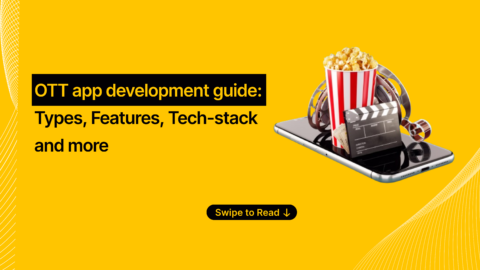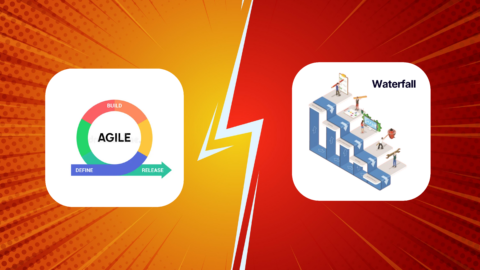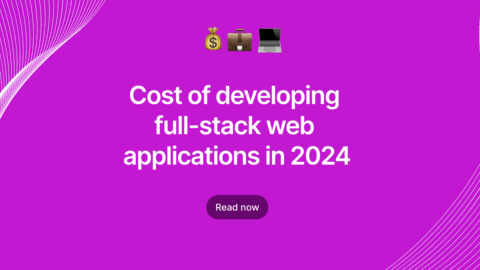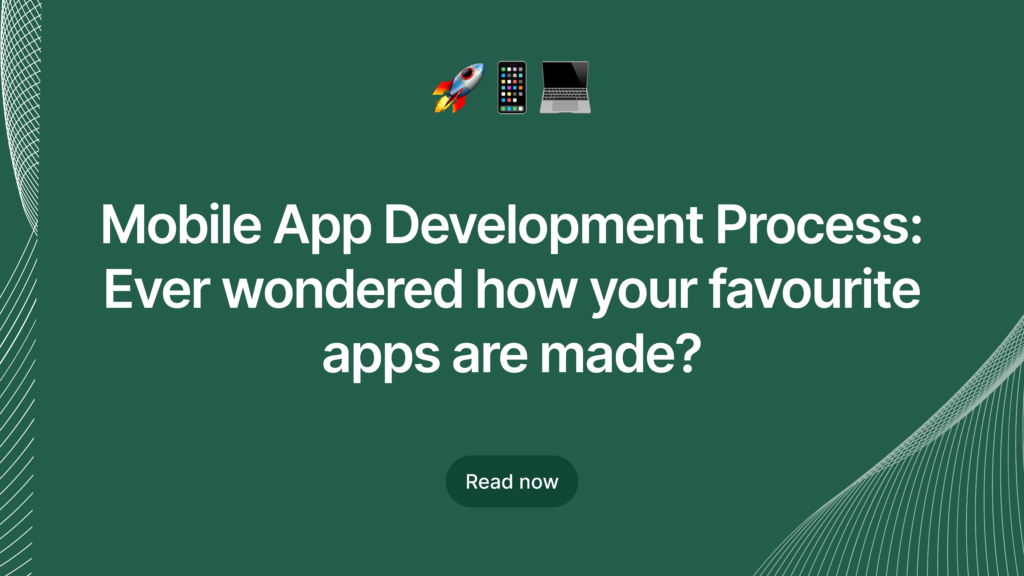
Well, how difficult has it become to imagine our daily lives without smartphones and mobile apps? For millennials a day without smartphone is like a year without water and interestingly most of us won’t survive. Without any doubts, businesses have started investing a lot of manpower and money into building apps that help them win the market.
Do you want to learn more about the mobile app development process? then you have landed at the right place
No matter what industry you’re in or how long you’ve been in business, one of the best ways to grow is by creating a popular app.
Think about it – things like virtual reality, artificial intelligence, and smart devices have become part of our everyday lives. These technologies have totally changed how apps are made and used.
Developing an app isn’t just about having fun – it takes careful planning and a step-by-step approach to get it right. The mobile app industry has come a long way, and now everyone from banks to fashion brands needs their own app to stay competitive.
From simple games like Flappy Bird to apps that meet all our needs, mobile technology has come a long way.
In this blog we will understand the mobile app development process in detail.
Mobile app development process
Ideation
In the initial stages of mobile app development, ideation plays a crucial role. It’s about coming up with a clear concept and a definite idea of what your app will offer to the target audience. This involves identifying a problem that your app can solve and thinking about how it can benefit users. Sketching out the interface of your app and planning its structure and layout can help give clarity to your ideas.
Additionally, considering app monetization strategies early on is important to ensure profitability. Once you have a solid concept, you can proceed to the next steps of the development process, such as market research and design.
Market research
Market research is an essential step in the mobile app development process, helping developers gain insights into their target audience, competitors, and market trends. By conducting thorough market research, developers can identify the needs and preferences of their target users, understand the features and functionalities offered by competing apps, and uncover opportunities for innovation and differentiation. This information allows developers to make informed decisions throughout the app development lifecycle, from ideation to launch and beyond. Ultimately, market research helps ensure that the app meets the needs of its intended users and stands out in a competitive market landscape.
Analysis & planning
Analysis and planning are critical stages in the mobile app development process, laying the foundation for a successful project. During this phase, developers carefully assess the app’s requirements, objectives, and constraints and identify potential risks and challenges. Through meticulous analysis, developers gain a comprehensive understanding of the project scope, technical feasibility, and resource requirements. Subsequently, they formulate a detailed plan outlining the development timeline, milestones, tasks, and responsibilities. This strategic approach ensures that the app development proceeds smoothly, with clear direction and alignment with the project goals. Effective analysis and planning are key to delivering a high-quality app that meets stakeholder expectations.
Design
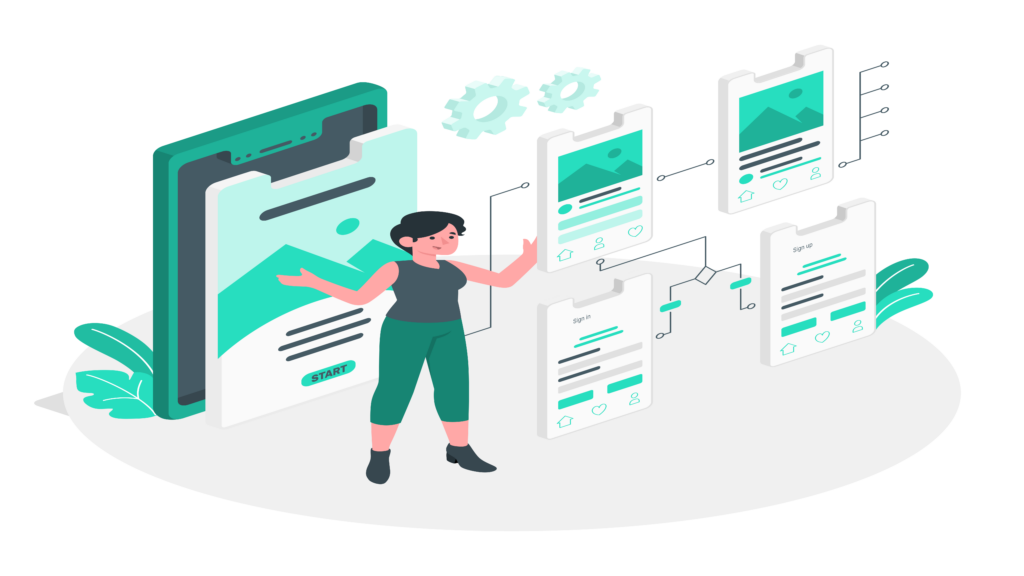
User interface (UI)
UI (User Interface) design plays a crucial role in mobile app development, focusing on the visual aspects that users interact with. It involves creating visually appealing layouts, buttons, icons, and other graphical elements to ensure an intuitive and engaging user experience. UI designers aim to strike a balance between aesthetics and functionality, making it easy for users to navigate the app and perform tasks efficiently.
User experience (UX)
UX (User Experience) design is all about the overall experience that users have while interacting with the app. It involves understanding user behaviors, needs, and preferences to design seamless and enjoyable user journeys. UX designers prioritize usability, accessibility, and satisfaction, aiming to create intuitive interfaces that guide users through the app effortlessly. Through research, prototyping, and testing, UX designers ensure that every interaction with the app is meaningful and satisfying for the user.
Prototype
Prototyping is a critical phase in mobile app development, allowing designers and developers to create a preliminary version of the app to test its functionality and user experience. It involves building a simplified version of the app’s interface and features, often using wireframes or mockups, to gather feedback and identify potential improvements. Prototypes help stakeholders visualize the final product, validate design decisions, and iterate quickly based on user feedback, ultimately reducing development time and costs.
Development
The development phase is where the actual coding and programming of the mobile app take place. Developers use programming languages like Java, Kotlin (for Android) or Swift, Objective-C (for iOS) to write the code that brings the app to life. This phase involves translating the app design into functional features, integrating backend services, and optimizing performance for various devices and platforms. Development teams collaborate closely to ensure that the app meets design specifications, follows best coding practices, and adheres to industry standards and guidelines.
Testing
Testing is a crucial step in mobile app development, aimed at identifying and fixing bugs, errors, and usability issues before the app is released to users. It involves various testing techniques, including functional testing, usability testing, performance testing, and security testing, to ensure that the app functions as intended across different devices, operating systems, and network conditions. Testing helps developers validate the app’s functionality, assess its performance, and ensure a smooth and seamless user experience. By detecting and resolving issues early in the development process, testing helps deliver a high-quality app that meets user expectations and business requirements.

Reasons to invest in mobile app development
1. Go mobile for growth
In today’s digital age, mobiles are king. Users are increasingly turning to their smartphones to connect with businesses, making mobile channels essential for growth. Don’t miss out – invest in mobile apps to stay ahead of the curve.
2. Market with ease
Mobile apps make it simple for customers to access your business anytime, anywhere. Strengthen your brand and make your services easily accessible. It’s a win-win for you and your customers.
3. Revolutionize sales
Mobile apps have transformed the way we shop, making it easier than ever. Don’t get left behind – offer a dedicated app to give customers the information they need to make informed decisions.
4. Reach a wider audience
Mobile devices are everywhere, especially among younger generations. To connect with this audience, you need a mobile app. It’s the key to reaching more customers and expanding your business.
5. Convenience is key
Mobile apps offer unmatched convenience and usability. From easy communication to streamlined payments, they provide a seamless experience that keeps customers coming back for more.
6. Engage your customers
Mobile apps are a powerful tool for engaging with customers. Features like real-time chat and personalized offers help you connect with customers on a deeper level, driving loyalty and repeat business.
React native vs flutter for mobile app development
When comparing React Native and Flutter for mobile app development, it ultimately depends on your specific project requirements and team expertise.
React Native, developed by Facebook, is widely used and has a larger community. It allows developers to build mobile apps using JavaScript and offers a smooth development experience, especially for those familiar with React. However, it can sometimes suffer from performance issues and lacks certain native features.
On the other hand, Flutter, developed by Google, uses Dart programming language and provides a rich set of customizable widgets. It offers excellent performance and allows for building beautiful, high-performance apps with a single codebase. However, it may have a steeper learning curve for developers new to Dart or the Flutter framework.
In summary, React Native may be preferred for projects where familiarity with JavaScript and React is advantageous, while Flutter may be a better choice for projects that prioritize performance and native-like UI design. Ultimately, both frameworks have their strengths and weaknesses, and the decision should be based on the specific needs of your project and the expertise of your development team.
Calculate your app development costs quickly and accurately with our app development cost calculator! Simply input your project requirements to get an instant estimate.
Try it now: [https://www.agiratech.com/app-cost-calculator]
Conclusion
In conclusion, the mobile app development process has become an integral part of modern business strategies, catering to the growing demand for convenient, accessible, and engaging digital experiences. From ideation to deployment, each stage of the development process plays a crucial role in creating successful mobile apps that meet the needs of users and businesses alike.
As technology continues to evolve, frameworks like React Native and Flutter offer developers powerful tools to create high-quality mobile apps efficiently. Whether choosing React Native for its familiarity or Flutter for its performance, the key is to align framework selection with project requirements and team expertise.
Ultimately, investing in mobile app development enables businesses to reach a wider audience, enhance customer engagement, and stay ahead of the competition in today’s mobile-first world. So, if you’re considering building a mobile app for your business, now is the time to take the leap and unlock the countless opportunities that mobile technology has to offer.







